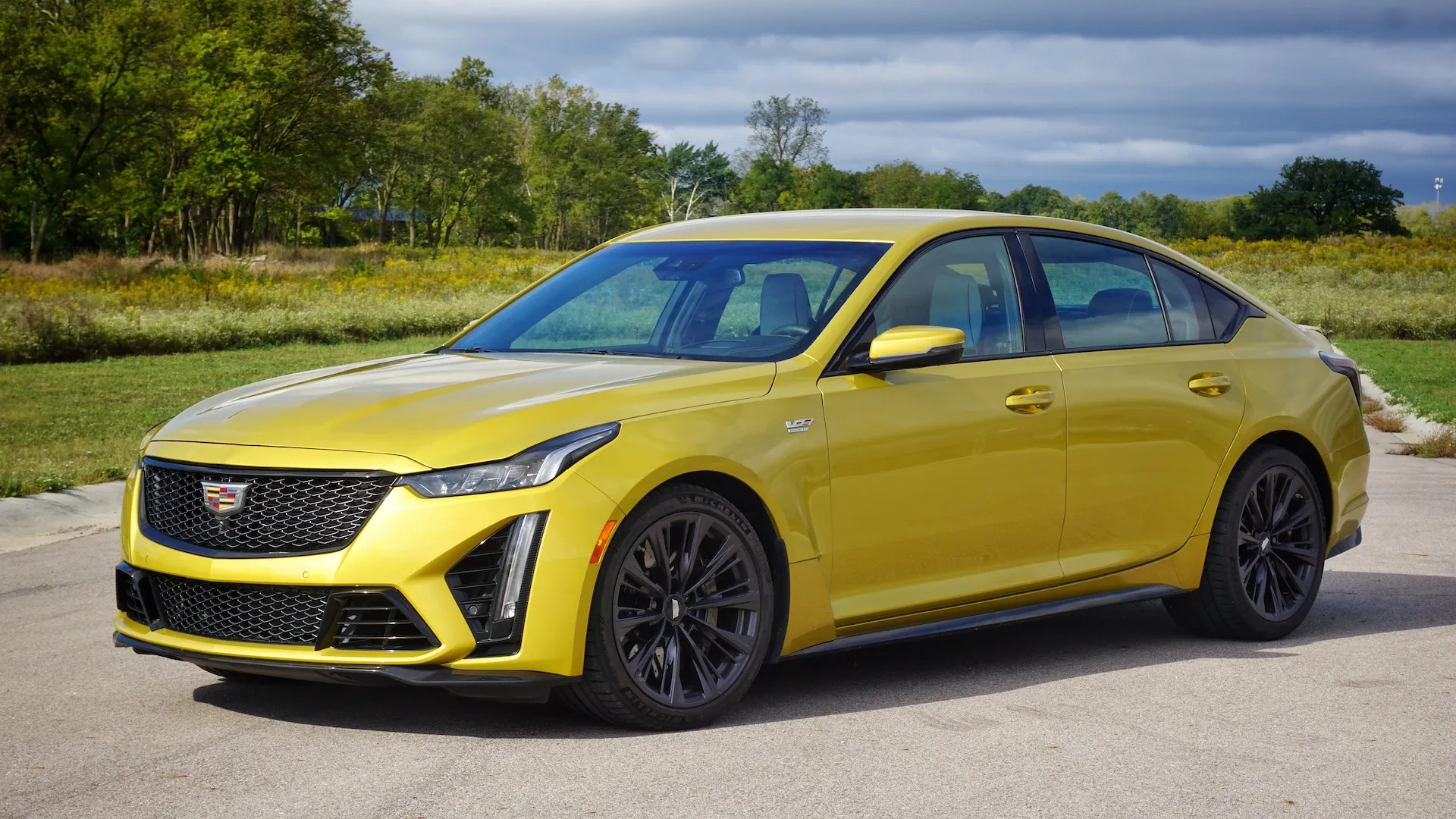Throttle response represents one of the most fundamental aspects of automotive performance, directly influencing how connected and engaged a driver feels with their vehicle.
In the sedan segment, this characteristic varies dramatically across different models, manufacturers, and drivetrain configurations. Even if you have a high-performance vehicle, your car will feel sluggish when accelerating if your throttle response is bad.
Understanding throttle response becomes particularly crucial when selecting a sedan, as these vehicles serve diverse roles from daily commuting to spirited weekend drives.
The quality of throttle response encompasses several technical factors including electronic throttle control calibration, engine management system programming, transmission response, and the mechanical characteristics of the powertrain itself.
Modern sedans face unique challenges in this regard, as most modern cars don’t have immediate throttle response compared to older vehicles due to electronic systems designed to optimize emissions, efficiency, and safety.
However, certain manufacturers have managed to maintain exceptional throttle response while meeting contemporary regulatory requirements.
Performance-oriented sedans typically excel in throttle response through careful calibration of their electronic systems, lightweight components, and aggressive engine mapping.
These vehicles prioritize driver engagement and immediate power delivery over maximum fuel efficiency.
Conversely, economy-focused sedans often sacrifice throttle responsiveness in favor of smoothness, efficiency, and compliance with stringent emissions standards.
The difference becomes immediately apparent to drivers who value spirited driving dynamics and precise control over their vehicle’s acceleration characteristics.
This comprehensive analysis examines ten sedans representing both ends of the throttle response spectrum, providing detailed insights into what makes certain models exceptionally responsive while others feel sluggish and disconnected from driver inputs.
5 Sedans with Exceptional Throttle Response
These performance-oriented sedans feature instantaneous throttle response that translates every pedal input into immediate power delivery without hesitation or delay.
Electric sedans like the Tesla Model S Plaid deliver up to 1,020 horsepower through three electric motors, providing instant torque that eliminates traditional throttle lag.
High-performance internal combustion engines in these vehicles utilize sophisticated electronic throttle management systems that respond within milliseconds of pedal input, creating seamless acceleration curves.
The fastest sedans can achieve 0-60 mph times under 2 seconds, demonstrating their exceptional power delivery characteristics.
These vehicles employ advanced engine management systems, lightweight components, and optimized air intake designs that work together to minimize any delay between driver command and engine response.
The combination of responsive fuel injection systems, precise throttle body control, and sophisticated transmission programming creates driving experiences where acceleration feels telepathic rather than mechanical.
1. BMW M3 Competition
The BMW M3 Competition stands as the benchmark for throttle response in the performance sedan segment, delivering an extraordinarily immediate connection between accelerator input and engine output.
This exceptional responsiveness stems from BMW’s meticulous calibration of their twin-turbocharged 3.0-liter S58 inline-six engine, which produces 503 horsepower and 479 lb-ft of torque.
The engine management system has been programmed with minimal delay between throttle input and boost delivery, creating an almost naturally aspirated feel despite the turbocharging.
The M3 Competition’s electronic throttle control system represents years of refinement in BMW’s M division, with engineers specifically focusing on eliminating the traditional lag associated with drive-by-wire systems.
The throttle mapping provides linear response throughout the pedal travel, meaning small inputs translate to proportional power increases without sudden surges or delays.
This precise calibration allows drivers to modulate power delivery with remarkable accuracy, whether navigating tight corners or executing smooth highway merges.
BMW’s implementation of variable valve timing and lift systems further enhances throttle response by optimizing airflow characteristics across the entire rev range.
The engine responds eagerly from idle, with minimal turbo lag thanks to twin-scroll turbochargers and optimized exhaust manifold design.
The sophisticated engine management system continuously adjusts parameters based on driving conditions, maintaining consistent throttle response regardless of ambient temperature, altitude, or fuel quality.
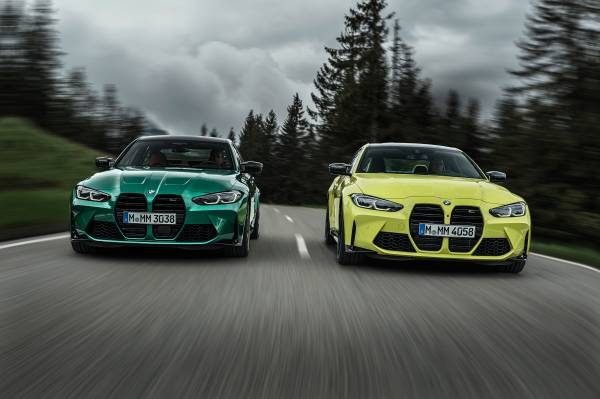
The eight-speed M Steptronic automatic transmission plays a crucial role in the overall throttle response experience.
Unlike conventional automatics that prioritize comfort, this transmission features aggressive shift programming that maintains engine speed in optimal power bands.
The torque converter locks up quickly to eliminate power loss, while shift points are calibrated to maximize acceleration potential.
Manual mode provides even sharper response, with rev-matching on downshifts that maintains momentum during spirited driving.
Driving modes significantly influence throttle response characteristics, with Sport and Sport+ modes delivering increasingly aggressive throttle mapping.
In these settings, the slightest pedal input produces immediate engine response, creating an almost telepathic connection between driver intent and vehicle acceleration.
The Track mode eliminates all electronic intervention, providing the purest throttle response possible while maintaining the sophisticated engine management that prevents damage under extreme conditions.
The M3 Competition’s throttle response excellence extends beyond pure acceleration to include engine braking and off-throttle behavior. When lifting off the accelerator, the engine provides predictable deceleration that aids vehicle balance and control.
This characteristic proves invaluable during performance driving, allowing drivers to use throttle lift as a tool for weight transfer and cornering dynamics.
2. Cadillac CT5-V Blackwing
The Cadillac CT5-V Blackwing represents American engineering prowess in delivering exceptional throttle response through its hand-built 6.2-liter supercharged LT4 V8 engine.
This naturally aspirated approach to forced induction eliminates traditional turbo lag while providing immediate power delivery that rivals the best European performance sedans.
The supercharger’s instant boost delivery creates throttle response that feels almost supernatural, with power arriving the moment the accelerator pedal moves.
Cadillac’s calibration philosophy for the CT5-V Blackwing prioritizes driver engagement over comfort, resulting in throttle mapping that provides direct correlation between pedal position and engine output.
The electronic throttle control system features minimal filtering or delay, creating a mechanical feel reminiscent of classic cable-operated throttles.
This immediate response allows skilled drivers to precisely control wheel slip during aggressive acceleration while maintaining smooth power delivery for daily driving situations.
The LT4 engine’s sophisticated cylinder deactivation system maintains throttle response even during fuel-saving operations. When running on four cylinders during light-load conditions, the transition back to full eight-cylinder operation occurs seamlessly without noticeable delay or surge.
This technology ensures consistent throttle response regardless of driving mode or current engine configuration, providing confidence to drivers who demand predictable performance characteristics.
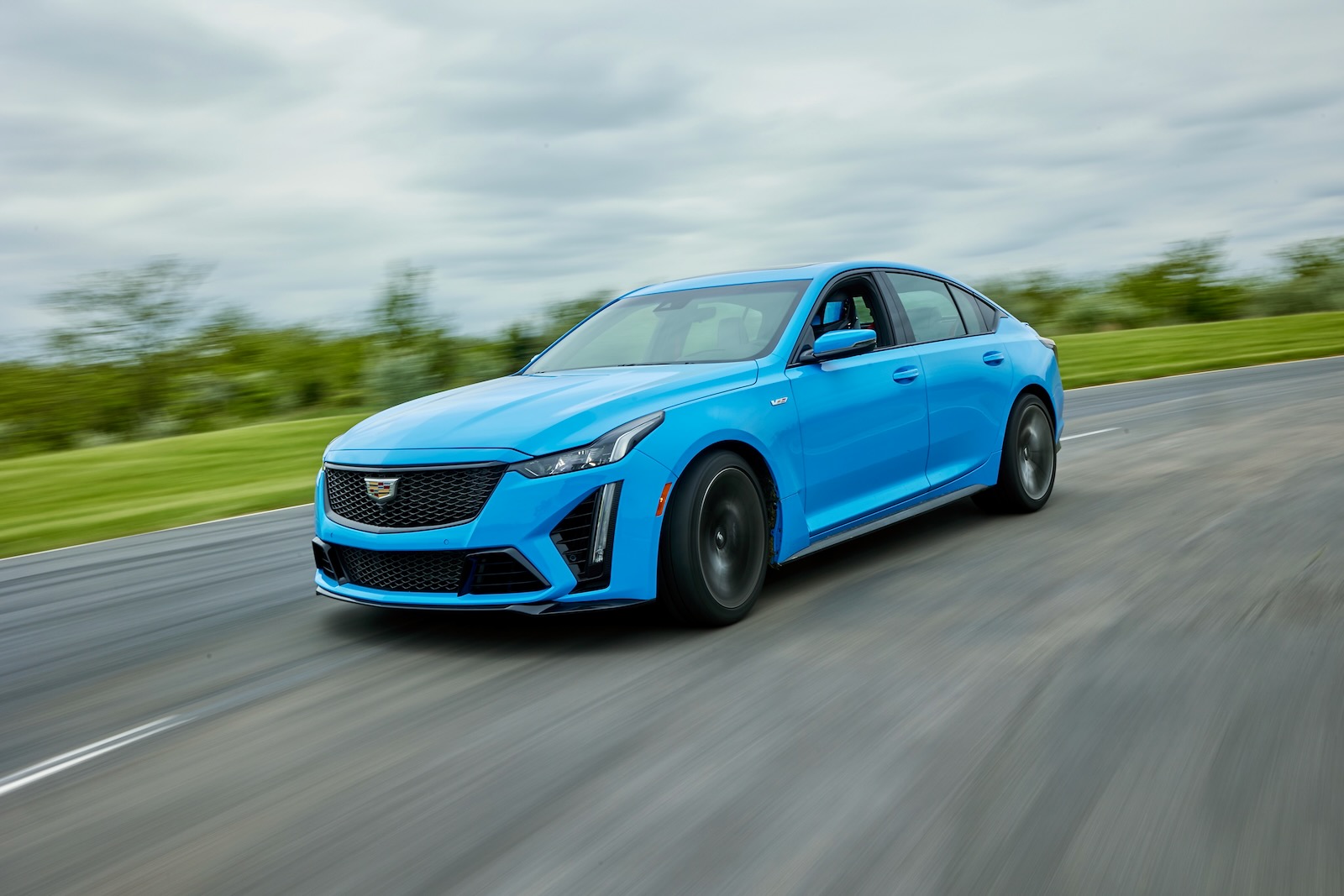
The available six-speed manual transmission enhances throttle response through direct mechanical connection and driver control over gear selection.
Unlike automatics that may delay shift points for efficiency, the manual allows drivers to maintain optimal engine speed for maximum throttle response.
The precise rev-matching system ensures smooth downshifts while maintaining engine momentum, creating seamless power delivery during performance driving scenarios.
For customers preferring automatic operation, the ten-speed automatic transmission features aggressive programming that prioritizes performance over efficiency.
Shift points are calibrated to maintain engine speed in peak power zones, while the torque converter locks up quickly to eliminate power loss.
The transmission’s learning capability adapts to individual driving styles, becoming increasingly responsive to driver inputs over time while maintaining smooth operation during normal driving.
The CT5-V Blackwing’s multiple driving modes dramatically alter throttle response characteristics to match driver preferences and road conditions.
Track mode delivers the most aggressive throttle mapping, with immediate response to the slightest pedal input.
Tour mode provides more gradual power delivery suitable for comfort-oriented driving, while Sport mode offers a balanced compromise between performance and refinement.
Each mode maintains the engine’s fundamental responsiveness while adjusting the interpretation of driver inputs.
3. Genesis G70 3.3T
The Genesis G70 3.3T demonstrates that luxury sedans need not sacrifice throttle response for refinement, delivering exceptional acceleration characteristics through its twin-turbocharged 3.3-liter V6 engine.
This powerplant produces 365 horsepower and 376 lb-ft of torque while maintaining remarkably low turbo lag through advanced twin-scroll turbocharger technology and optimized exhaust manifold design.
The result is throttle response that feels almost naturally aspirated despite the forced induction system. Genesis engineers focused extensively on electronic throttle calibration to eliminate the disconnected feel common in luxury sedans.
The throttle mapping provides linear response throughout the pedal travel, with power delivery that matches driver expectations regardless of current engine speed or load conditions.
This careful calibration allows drivers to modulate power precisely, whether executing smooth merging maneuvers or aggressive acceleration during spirited driving sessions.
The G70’s sophisticated engine management system continuously optimizes parameters for maximum throttle response while maintaining reliability and emissions compliance.
Variable valve timing adjusts intake and exhaust timing to optimize airflow characteristics, while the direct injection system provides precise fuel metering for immediate combustion response.
These technologies work together to minimize the delay between throttle input and power delivery, creating an engaging driving experience that rivals dedicated sports sedans.
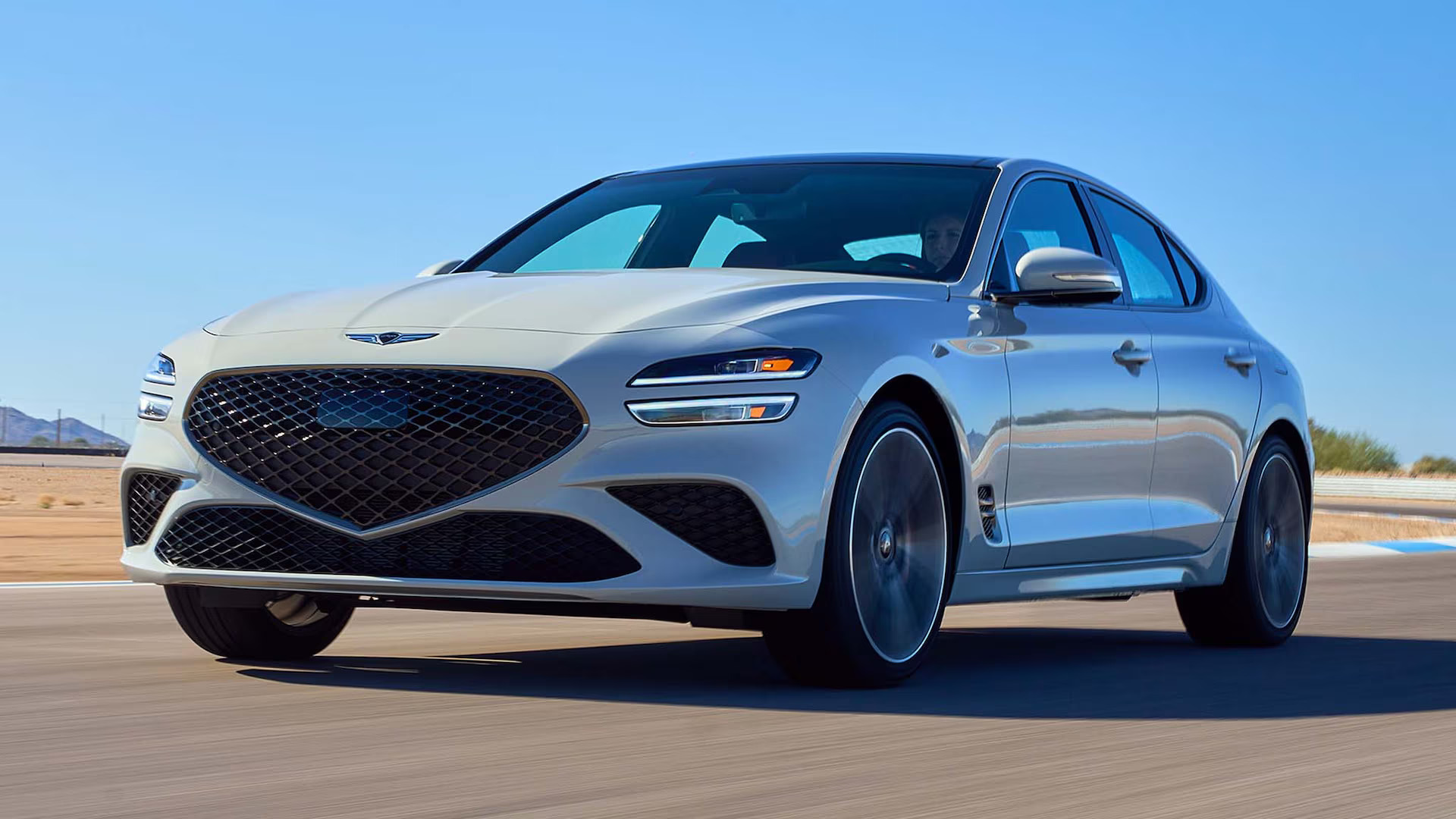
The eight-speed automatic transmission features programming specifically tuned for performance applications rather than maximum fuel efficiency.
Shift points are calibrated to maintain engine speed in optimal power bands, while the torque converter locks up quickly to eliminate power loss through hydraulic coupling.
The transmission’s manual mode provides even sharper response, with immediate downshifts that maintain engine momentum during performance driving situations.
Genesis’s Drive Mode Select system offers multiple throttle response characteristics to match varying driving conditions and preferences. Sport mode delivers the most aggressive throttle mapping, with immediate response to accelerator inputs that creates an almost race-car-like feel.
Comfort mode provides more gradual power delivery suitable for daily driving, while Eco mode optimizes throttle response for maximum fuel efficiency without completely eliminating performance characteristics.
The G70’s throttle response excellence extends to its sophisticated traction and stability control systems, which work seamlessly with the engine management to provide optimal power delivery under all conditions.
These systems allow maximum throttle response while preventing wheel spin or loss of control, enabling drivers to utilize the full performance potential safely.
The integration between throttle control and chassis systems creates confidence-inspiring behavior that encourages spirited driving while maintaining safety margins.
4. Alfa Romeo Giulia Quadrifoglio
The Alfa Romeo Giulia Quadrifoglio represents Italian passion for throttle response through its Ferrari-derived twin-turbocharged 2.9-liter V6 engine, delivering 505 horsepower with exceptional immediacy.
This powerplant shares DNA with Ferrari’s award-winning engines, incorporating racing-inspired technology that prioritizes throttle response above all other considerations.
The result is acceleration characteristics that feel almost violent in their immediacy, creating an emotional connection between driver and machine that few sedans can match.
Alfa Romeo’s approach to throttle calibration emphasizes pure performance over comfort or efficiency considerations.
The electronic throttle control system features minimal filtering or delay, providing direct correlation between pedal position and engine output that rivals mechanical cable systems.
This immediate response allows expert drivers to modulate power with surgical precision while providing novice drivers with clear feedback about vehicle dynamics and traction limits.
The Giulia Quadrifoglio’s advanced turbocharger technology minimizes lag through innovative twin-scroll design and optimized exhaust routing. The turbos spool up almost instantaneously, providing immediate boost pressure that creates throttle response characteristics similar to naturally aspirated engines.
This technology, combined with sophisticated wastegate control and anti-lag systems, ensures consistent power delivery regardless of engine speed or current boost levels.
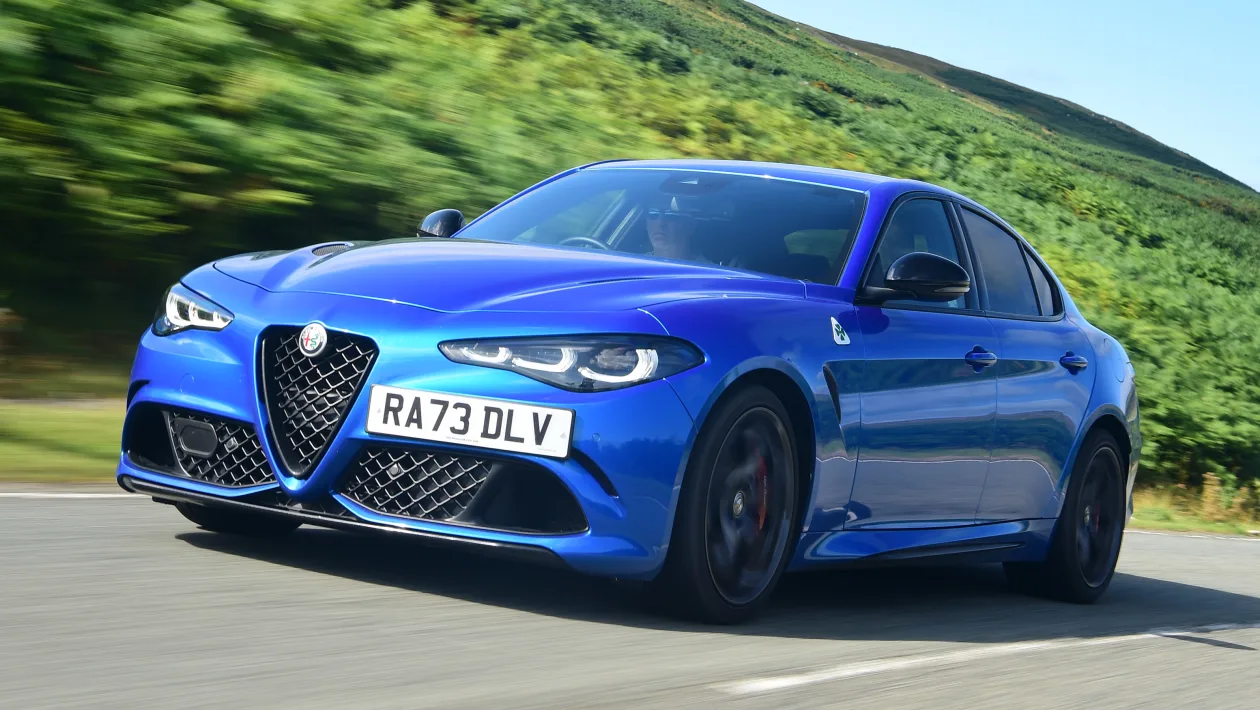
The eight-speed ZF automatic transmission receives special calibration for the Quadrifoglio application, with shift programming that prioritizes performance over smoothness or efficiency.
Gear changes occur with lightning speed, maintaining engine momentum during acceleration while providing seamless power delivery. The transmission’s manual mode offers even sharper response, with aggressive downshift programming that maintains optimal engine speed during performance driving scenarios.
Alfa Romeo’s DNA drive mode selector dramatically alters throttle response characteristics to match driver preferences and road conditions. Race mode delivers the most aggressive throttle mapping available, with immediate response to the slightest pedal input that creates an almost telepathic connection between driver intent and vehicle acceleration.
Dynamic mode provides spirited response suitable for enthusiastic street driving, while Natural mode offers more refined power delivery for daily use without sacrificing the engine’s fundamental responsiveness.
The Quadrifoglio’s throttle response integrates seamlessly with its sophisticated chassis control systems, including adaptive suspension, limited-slip differential, and advanced stability control.
These systems work together to optimize power delivery and vehicle dynamics, allowing maximum throttle response while maintaining control and safety.
The result is a sedan that encourages aggressive driving while providing the electronic assistance necessary to handle the substantial power output safely.
Also Read: 5 Cars With Remote Kill Features and 5 That Keep Running After Theft
5. Lexus IS 500 F Sport Performance
The Lexus IS 500 F Sport Performance delivers exceptional throttle response through its naturally aspirated 5.0-liter V8 engine, providing immediate power delivery without the complications of turbocharging or hybrid systems.
This traditional approach to performance creates throttle response characteristics that feel organic and predictable, with power delivery that matches driver expectations throughout the rev range.
The 472-horsepower engine responds instantly to throttle inputs, creating an engaging driving experience that celebrates the virtues of natural aspiration.
Lexus engineers calibrated the electronic throttle system to maintain the direct feel of mechanical linkages while incorporating modern safety and efficiency features.
The throttle mapping provides linear response throughout the pedal travel, with power delivery that increases proportionally to driver input.
This careful calibration eliminates the sudden surges or delays common in electronically controlled systems, creating confidence-inspiring behavior during both spirited driving and daily commuting situations.
The IS 500’s sophisticated engine management system optimizes parameters for maximum throttle response while maintaining Lexus’s renowned reliability standards.
Variable valve timing adjusts intake and exhaust timing to optimize airflow characteristics, while the direct injection system provides precise fuel metering for immediate combustion response.
These technologies work together seamlessly to minimize delay between throttle input and power delivery, creating an engaging experience that rivals dedicated sports sedans.
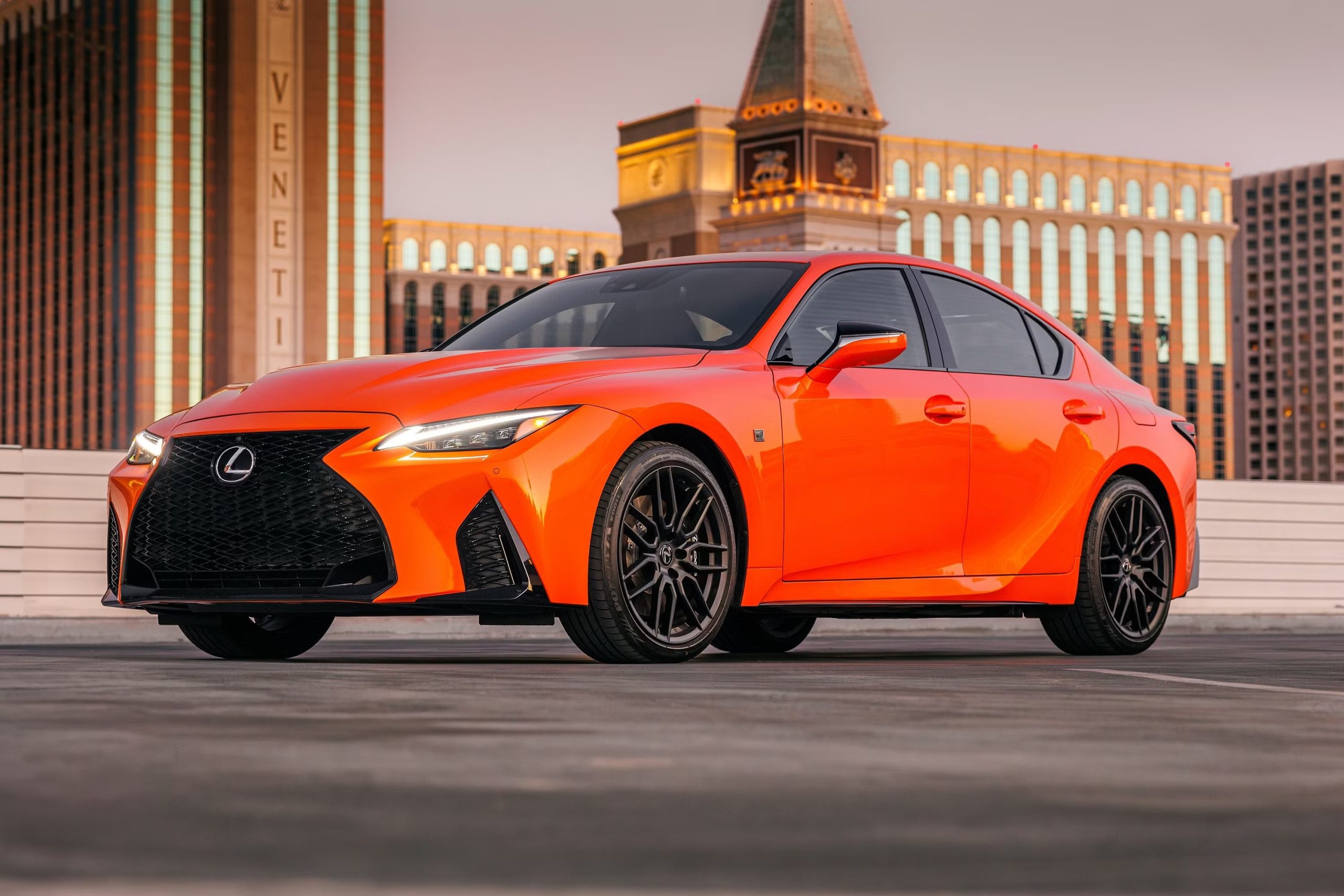
The eight-speed automatic transmission receives special programming for the IS 500 application, with shift points calibrated to maintain engine speed in optimal power bands.
The transmission features aggressive downshift programming that maintains engine momentum during performance driving, while smooth upshifts ensure seamless power delivery during acceleration.
Manual mode provides even sharper response, with immediate gear changes that allow drivers to optimize engine speed for maximum performance.
Lexus’s Drive Mode Select system offers multiple throttle response characteristics to accommodate varying driving preferences and conditions.
Sport S+ mode delivers the most aggressive throttle mapping, with immediate response to accelerator inputs that creates race-car-like behavior.
Sport S mode provides a spirited response suitable for enthusiastic driving, while Normal mode offers refined power delivery for daily use without sacrificing the engine’s fundamental responsiveness.
The IS 500’s throttle response excellence extends to its integration with advanced safety and stability systems, which work seamlessly to provide optimal power delivery under all conditions.
These systems allow maximum throttle response while preventing loss of control, enabling drivers to utilize the full performance potential safely. The sophisticated traction control allows controlled wheel slip when appropriate while preventing dangerous situations, creating confidence that encourages spirited driving within safe parameters.
5 Sedans with Sluggish Throttle Response
These economy-focused sedans suffer from noticeable throttle lag and delayed response that creates frustrating gaps between pedal input and actual acceleration.
Some vehicles experience throttle lag that causes a momentary pause between pressing the accelerator pedal and the engine responding with increased power, particularly in turbocharged applications where boost pressure must build up.
Their smaller displacement engines and efficiency-tuned programming prioritize fuel economy over immediate response, resulting in sluggish acceleration that feels disconnected from driver inputs.
Many base-trim sedans produce only modest horsepower figures and can feel sluggish during acceleration, especially when merging onto highways or climbing hills.
These vehicles often utilize continuously variable transmissions or efficiency-focused automatic transmissions that further compound the delayed response by hunting for optimal gear ratios.
The combination of conservative engine tuning, emission control systems, and fuel-saving technologies creates driving experiences where pressing the accelerator feels more like making a polite request than issuing a command.
1. Toyota Camry Hybrid
The Toyota Camry Hybrid exemplifies the throttle response challenges inherent in hybrid powertrains, with its complex interaction between the gasoline engine, electric motors, and continuously variable transmission creating noticeable delays and unpredictable power delivery.
The hybrid system’s computer must constantly decide whether to use electric power, gasoline engine power, or both, resulting in hesitation and inconsistent response to throttle inputs that frustrate drivers seeking immediate acceleration.
The Camry Hybrid’s powertrain management prioritizes fuel efficiency above all other considerations, leading to throttle calibration that filters and delays driver inputs to optimize energy consumption.
When accelerating from a stop, the system attempts to use only electric power initially, creating a sensation of sluggishness as the electric motors provide limited torque compared to direct gasoline engine response.
The transition between electric and gasoline power often occurs with noticeable hesitation, breaking the connection between driver intent and vehicle response.
The continuously variable transmission compounds throttle response issues by eliminating fixed gear ratios that would normally provide predictable acceleration characteristics.
Instead of discrete shifts that maintain engine momentum, the CVT allows engine speed to fluctuate independently of vehicle speed, creating a disconnected feeling during acceleration.
The transmission programming prioritizes efficiency over responsiveness, often allowing engine speed to drop too low for immediate power availability when sudden acceleration is required.
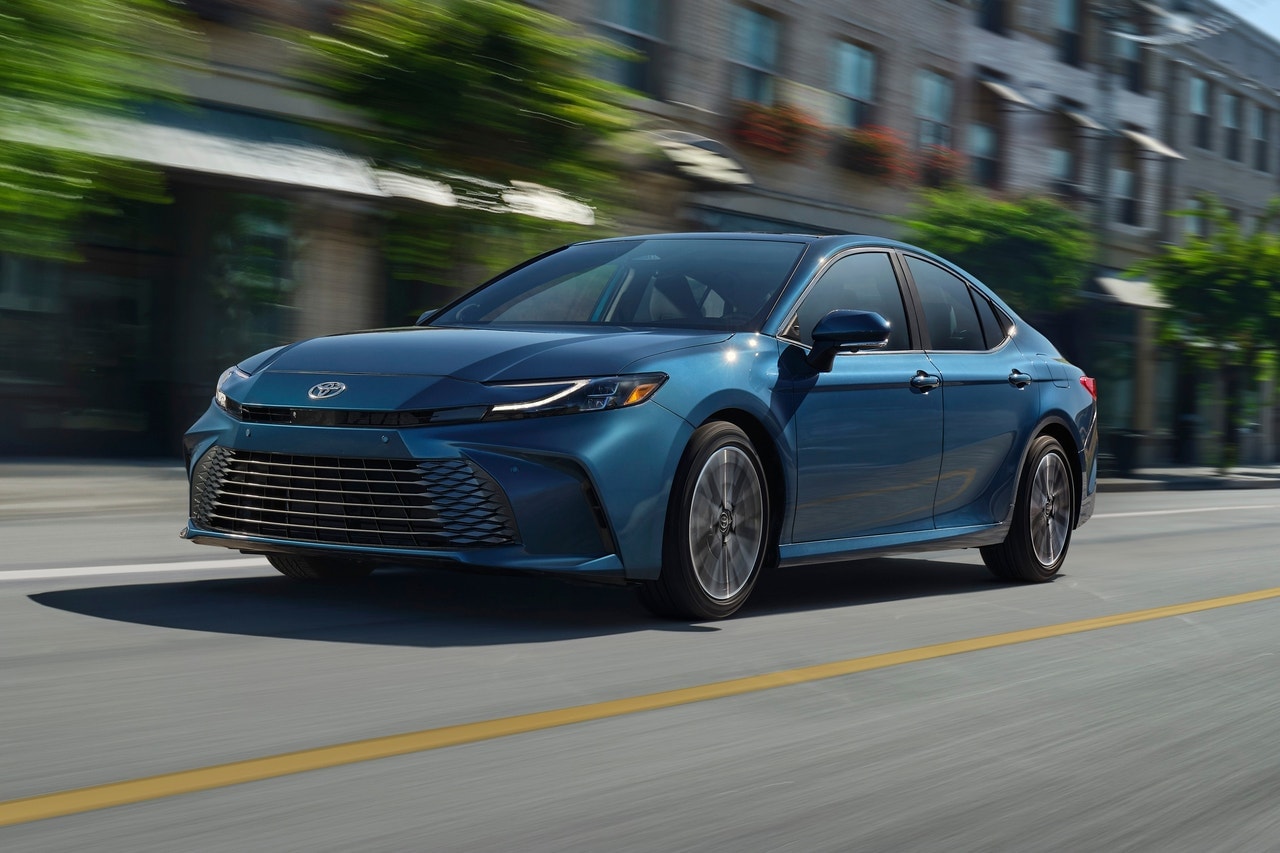
Toyota’s hybrid system integration creates additional delays through its complex power management algorithms, which must coordinate multiple power sources while optimizing for efficiency and emissions compliance.
The system’s conservative programming prevents aggressive acceleration that might compromise fuel economy, resulting in throttle response that feels muted and delayed compared to conventional powertrains.
Even in Sport mode, the hybrid system’s fundamental limitations prevent truly immediate throttle response. The Camry Hybrid’s regenerative braking system also affects throttle response by creating inconsistent pedal feel and behavior.
The transition between regenerative braking and friction braking can create confusion about power delivery, while the system’s attempt to maximize energy recovery sometimes conflicts with driver expectations for immediate power availability.
These characteristics make the vehicle feel disconnected and unpredictable during dynamic driving situations.
The hybrid powertrain’s thermal management requirements further compromise throttle response by limiting power availability when battery temperatures are suboptimal or when the gasoline engine requires warm-up time.
These limitations create inconsistent performance that varies with ambient conditions, driving history, and battery state of charge, making it difficult for drivers to predict vehicle response to throttle inputs accurately.
2. Nissan Altima (2.5L CVT)
The Nissan Altima equipped with the 2.5-liter engine and CVT transmission, represents one of the most sluggish throttle response experiences in the midsize sedan segment, with numerous factors contributing to delayed and disconnected acceleration characteristics.
The naturally aspirated engine lacks the immediate torque delivery of turbocharged alternatives, while the CVT transmission eliminates the positive engagement feel of traditional automatics or manual gearboxes.
Nissan’s CVT calibration prioritizes fuel efficiency and smoothness over throttle response, resulting in programming that filters driver inputs through complex algorithms designed to optimize transmission ratio for economy rather than performance.
When accelerating, the CVT often allows engine speed to rise without corresponding increases in vehicle speed, creating a rubber-band effect that disconnects driver intent from vehicle response.
This characteristic becomes particularly pronounced during highway merging or passing situations where immediate acceleration is critical.
The Altima’s electronic throttle control system compounds response issues through conservative programming that introduces significant delay between pedal input and engine response.
The system appears designed to prevent sudden acceleration that might compromise fuel economy or emissions compliance, resulting in throttle response that feels muted and unresponsive compared to more performance-oriented vehicles.
Even aggressive pedal inputs receive measured responses that lack the immediacy expected in modern vehicles.
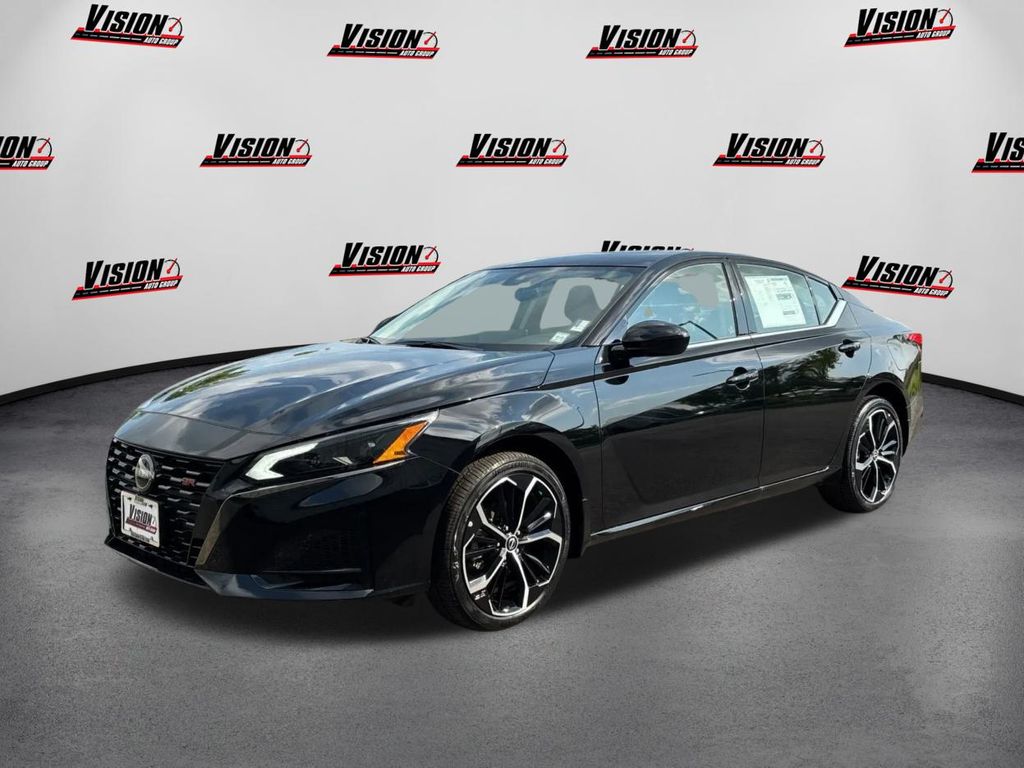
The 2.5-liter engine’s naturally aspirated configuration provides limited low-end torque, requiring higher engine speeds to generate meaningful acceleration.
This characteristic, combined with the CVT’s tendency to keep engine speed low for efficiency, creates situations where sudden throttle inputs produce minimal initial response until the transmission adjusts ratios and engine speed increases sufficiently to generate useful power output.
Nissan’s drive mode selections provide minimal improvement in throttle response characteristics, with Sport mode offering slightly more aggressive CVT programming but failing to address the fundamental delays inherent in the powertrain design.
The electronic systems remain conservative even in sportier settings, maintaining priority for efficiency over driver engagement and immediate response to throttle inputs.
The Altima’s throttle response issues become most apparent during transitional driving situations, such as rolling acceleration or quick lane changes, where the combination of delayed throttle response and CVT behavior creates uncertainty about vehicle acceleration capability.
These characteristics make the vehicle feel unpredictable and frustrating for drivers who expect immediate correlation between accelerator input and vehicle response.
3. Hyundai Elantra (Base Engine)
The base Hyundai Elantra equipped with the naturally aspirated 2.0-liter engine and continuously variable transmission exemplifies the throttle response compromises common in entry-level sedans, where cost considerations and efficiency mandates override performance characteristics.
The powertrain combination creates a sluggish, disconnected driving experience that leaves drivers feeling frustrated with delayed and unpredictable acceleration response.
Hyundai’s calibration of the naturally aspirated engine prioritizes emissions compliance and fuel economy over throttle response, resulting in conservative programming that introduces noticeable delays between pedal input and power delivery.
The engine management system appears to filter throttle inputs through algorithms designed to optimize efficiency, creating a muted response that lacks the immediacy expected in modern vehicles.
This becomes particularly problematic during situations requiring quick acceleration response. The CVT transmission compounds throttle response issues through programming that prioritizes smoothness and efficiency over driver engagement.
The transmission’s tendency to maintain low engine speeds for fuel economy creates situations where throttle inputs produce minimal initial response until the system gradually adjusts ratios to provide more power.
This rubber-band effect disconnects driver intent from vehicle response, creating uncertainty about acceleration capability.
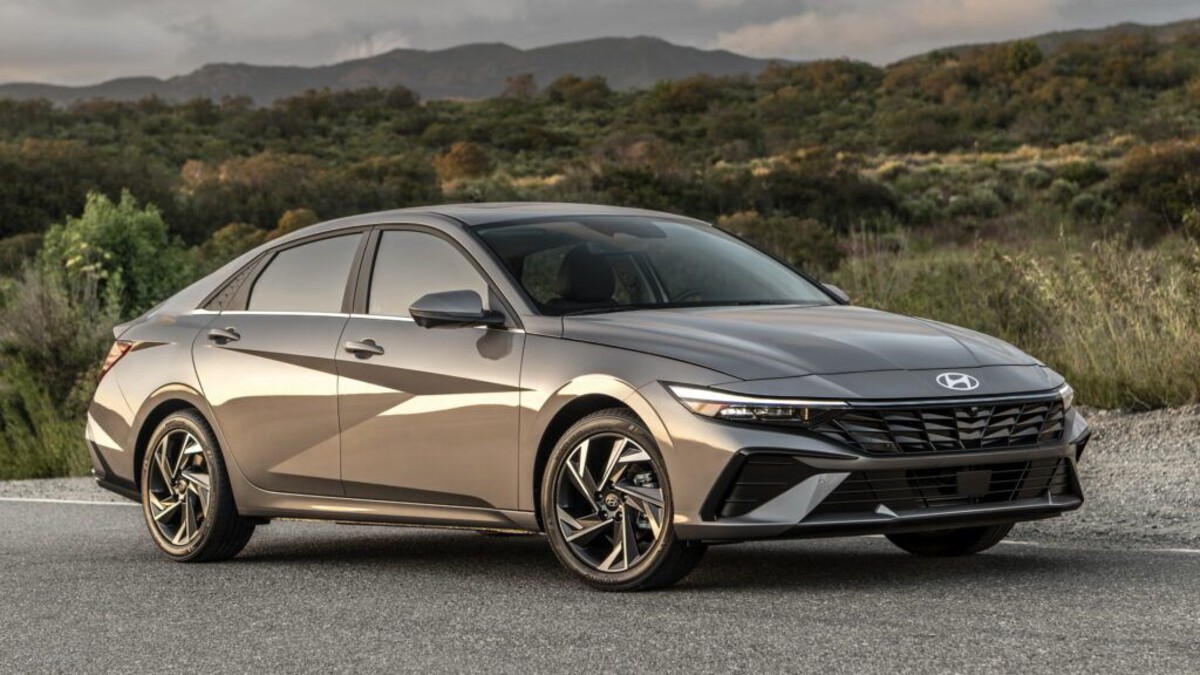
The base Elantra’s electronic throttle control system introduces additional delays through conservative programming that prevents aggressive acceleration responses.
The system appears designed to eliminate wheel spin and optimize emissions rather than provide immediate power delivery, resulting in throttle response that feels filtered and delayed compared to more performance-oriented alternatives.
Even spirited pedal inputs receive measured responses that lack engagement.
Hyundai’s drive mode selector provides minimal improvement in throttle response characteristics, with Sport mode offering slightly more aggressive programming but failing to address the fundamental limitations of the naturally aspirated engine and CVT combination.
The electronic systems remain conservative even in sportier settings, maintaining priority for efficiency and smoothness over immediate throttle response and driver engagement.
The Elantra’s throttle response limitations become most apparent during merging, passing, and other dynamic driving situations where immediate acceleration is necessary.
The combination of delayed throttle response, limited engine torque, and CVT behavior creates a driving experience that feels sluggish and unpredictable, particularly frustrating for drivers accustomed to more responsive powertrains or coming from vehicles with traditional automatic transmissions.
4. Mitsubishi Mirage G4
The Mitsubishi Mirage G4 represents the end of sluggish throttle response in the sedan segment, with its tiny 1.2-liter three-cylinder engine and CVT transmission creating one of the most disconnected driving experiences available in modern automobiles.
The powertrain combination prioritizes absolute fuel efficiency and low cost over any consideration of driver engagement or throttle response, resulting in acceleration characteristics that feel almost dangerously slow in certain traffic situations.
The 1.2-liter engine’s limited displacement and power output create fundamental limitations that no amount of electronic tuning can overcome, with only 78 horsepower available to move the vehicle.
The naturally aspirated configuration provides minimal low-end torque, requiring high engine speeds to generate even modest acceleration.
This characteristic, combined with conservative electronic throttle programming, creates throttle response that feels almost non-existent during initial acceleration attempts.
Mitsubishi’s CVT calibration exacerbates the engine’s limitations through programming that prioritizes fuel economy above all other considerations.
The transmission maintains extremely low engine speeds during normal driving, creating situations where throttle inputs produce virtually no immediate response until the system slowly adjusts ratios to bring engine speed into a more useful range.
This process can take several seconds, creating dangerous delays during merging or emergency acceleration situations.
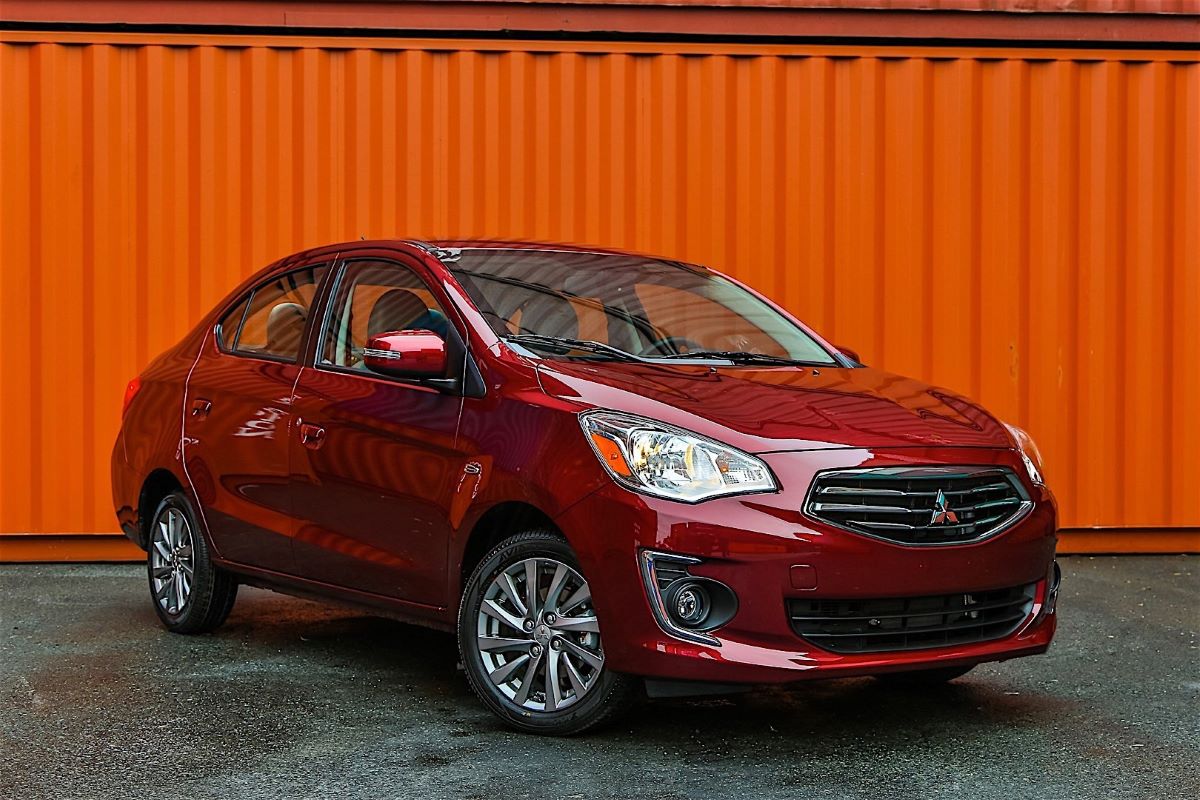
The Mirage G4’s electronic throttle control system introduces additional delays through extremely conservative programming designed to optimize fuel efficiency and emissions compliance.
The system heavily filters driver inputs, preventing aggressive acceleration that might compromise the vehicle’s primary mission of maximum fuel economy. Even full throttle inputs receive gradual, measured responses that lack any sense of urgency or immediate power delivery.
The vehicle’s minimal power output and sluggish throttle response create compounding issues during highway driving, where the engine struggles to maintain speed on inclines or provide passing acceleration.
The combination of limited power, delayed throttle response, and CVT behavior creates a driving experience that requires significant planning and patience to execute even basic traffic maneuvers safely.
Mitsubishi’s drive mode selections provide virtually no improvement in throttle response characteristics, as the fundamental limitations of the tiny engine and efficiency-focused CVT cannot be overcome through electronic programming alone.
The vehicle’s design philosophy prioritizes fuel economy and cost reduction over any consideration of driver engagement or responsive acceleration characteristics, creating a transportation appliance rather than an engaging automobile.
5. Chevrolet Malibu (1.5L Turbo)
The Chevrolet Malibu equipped with the 1.5-liter turbocharged engine presents a particularly frustrating example of sluggish throttle response, as the turbocharging should theoretically provide better low-end torque and response than naturally aspirated alternatives.
However, conservative calibration and emissions compliance requirements have resulted in a powertrain that delivers delayed, inconsistent acceleration characteristics that disappoint drivers expecting immediate turbo response.
The 1.5-liter turbo engine suffers from significant turbo lag due to aggressive emissions tuning and conservative boost pressure settings designed to maximize fuel efficiency.
The turbocharger requires substantial time to spool up and provide meaningful boost pressure, creating a noticeable delay between throttle input and power delivery.
This lag becomes particularly pronounced during low-speed acceleration from stops or during rolling acceleration where the turbo must build pressure from minimal levels.
Chevrolet’s electronic throttle calibration compounds the turbo lag issues through programming that introduces additional delays between pedal input and engine response.
The system appears designed to prevent sudden acceleration that might compromise emissions compliance or fuel economy, resulting in filtered throttle inputs that further disconnect driver intent from vehicle response. Even aggressive pedal inputs receive measured responses that lack immediacy.
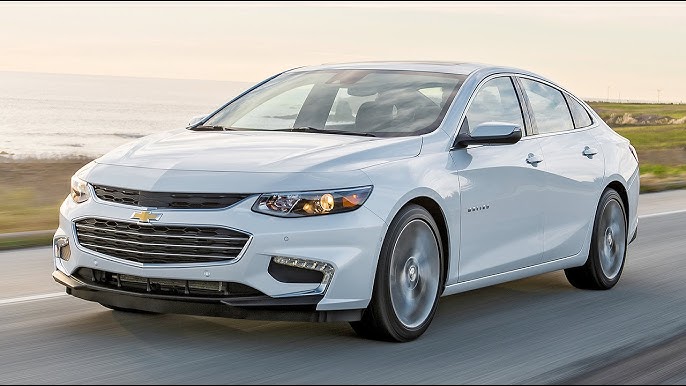
The nine-speed automatic transmission creates additional throttle response issues through programming that prioritizes fuel efficiency over performance.
The transmission often selects tall gear ratios that place the engine outside its optimal power band, requiring multiple downshifts to provide meaningful acceleration.
The transmission’s conservative shift programming introduces delays during kickdown situations, further compromising throttle response during dynamic driving situations.
The Malibu’s multiple drive modes offer minimal improvement in throttle response characteristics, with Sport mode providing slightly more aggressive throttle mapping and transmission programming, but failing to address the fundamental turbo lag and conservative calibration issues.
The electronic systems remain focused on efficiency even in sportier settings, maintaining delayed response characteristics that frustrate drivers seeking immediate acceleration.
The combination of turbo lag, conservative electronic programming, and transmission inefficiencies creates particularly problematic throttle response during transitional driving situations.
Highway merging, passing maneuvers, and quick acceleration from rolling speeds all suffer from delayed, unpredictable power delivery that makes the vehicle feel sluggish and unresponsive compared to naturally aspirated alternatives or properly tuned turbocharged powertrains.
Also Read: 5 Cars With Remote Kill Features and 5 That Keep Running After Theft

